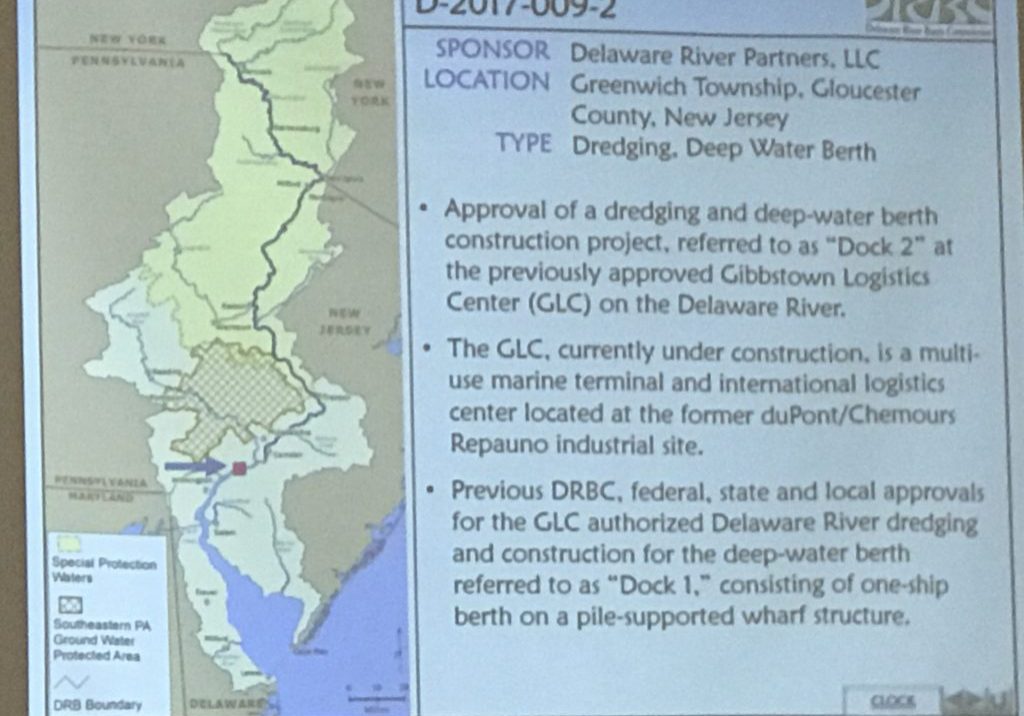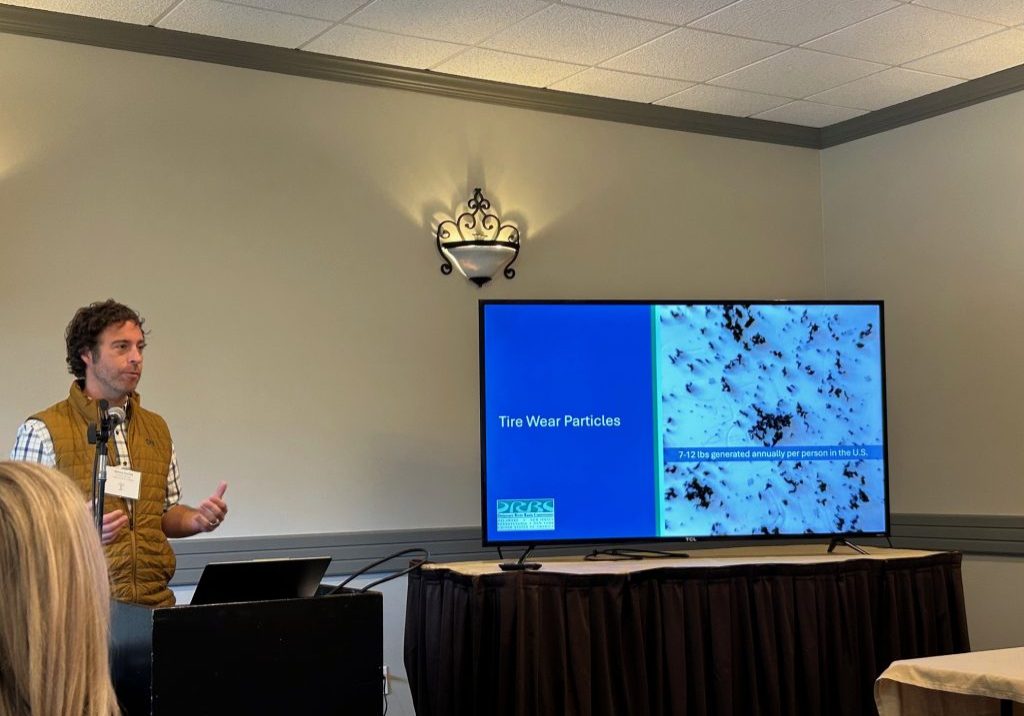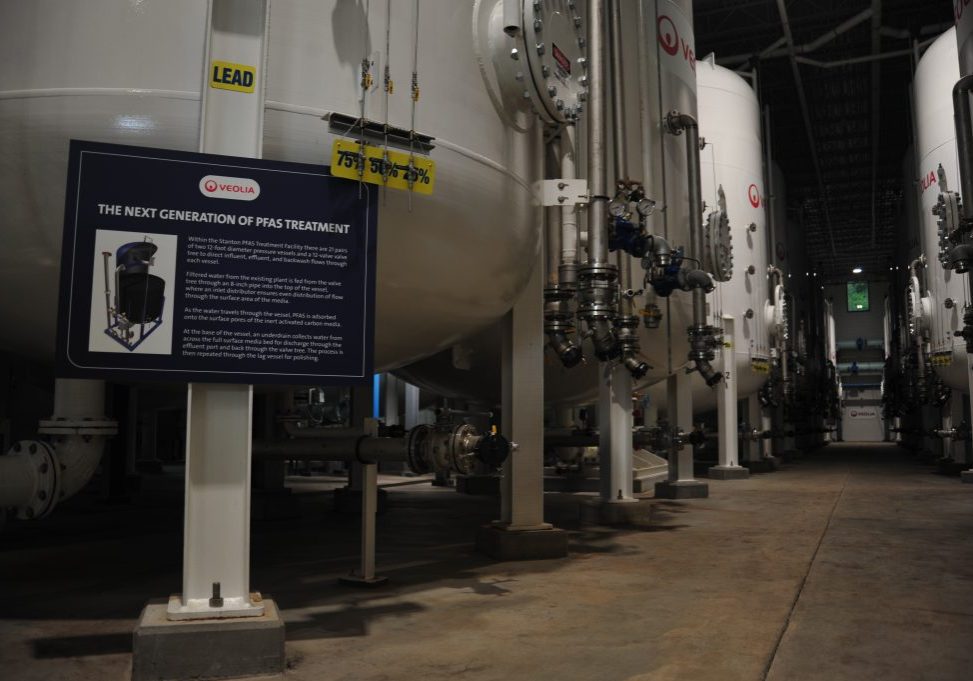
Delaware backs plan to quadruple trade capacity through Port Wilmington
| June 3, 2024
The State of Delaware’s long-held dream of making the Port of Wilmington a major player in the Delaware River’s container shipping business by developing a new shipping terminal has taken a major step forward with the state’s pledge to invest $195 million in the project.
The state said it will form a public-private partnership with port operator Enstructure and contribute just under one-third of the expected $635 million cost of the plan to expand the port’s capacity by building a terminal on a site known as the Edgemoor property, a former Chemours chemical plant.
The project is focused on adding an entirely new state-of-the-art terminal to handle containers about two miles north of the existing port facilities.
The terminal would quadruple the container capacity of the port, and Delaware state officials say it could open after three years of construction.
Enstructure, the Massachusetts-based ports and logistics company that operates the terminal, will pay most of the construction and equipment costs, investing $170 million in the first phase and $165 million in two successive phases.
The federal government in December announced that it will contribute $50 million to the project.
Delaware officials said they see the port as a crucial economic engine for the state.
Once opened, the new terminal would bring nearly 6,000 jobs to the area and generation $39.4 million in state and local taxes, according to the state. That would take the state and local tax income generated by the port as a whole to $76.2 million, according to the state.
“Investing in this new port is investing in Delaware’s future,” House Speaker Valerie Longhurst said in a statement. “We need to build this new port to keep our maritime economy competitive in the years ahead.”
Attracting global trade
The Edgemoor development is a key part of Delaware’s ambition to better compete in the global container trade sector that carries cargo up and down the Delaware.
The trade is currently dominated by the Port of Philadelphia, known as PhilaPort, about 30 miles north of the Port of Wilmington.
The existing Wilmington facilities are host to the Dole Fresh Fruit Company and Chiquita Fresh North America. Dole in January announced an expansion of its service linking the port with Columbia, Guatemala and Honduras that would boost the volume of cargo through the port.
Yet trade through the port is still far smaller than that of PhilaPort.
Port Wilmington annually handles about 215,000 20-foot equivalent unit containers (TEUs), the industry metric for measuring container volumes, according to the port website. That’s about one-third of the container volume that PhilaPort handles.
Delaware’s announcement comes as the operators of the main container terminal at PhilaPort continue to pursue a lawsuit in U.S. Eastern Pennsylvania District Court concerning the Edgemoor project.
The suit, filed in November against the U.S. Army Corps of Engineers, seeks to reverse construction permits issued by the agency that allowed the project to advance. It is pending.
Read more: Rival Delaware River ports go to court over Port Wilmington expansion
Handling more containers
Both Wilmington and PhilaPort hope that container trade along the Delaware River will gain a boost from the completion of a major project to dredge the main channel of the river to 45 feet deep, a project that the Army Corps concluded in December 2022.
The dredging was designed to enable some of the largest container vessels in use to sail up the river, creating an easy gateway to global trade.
The impetus for the dredging stemmed from the steady growth in the size of container ships, as operators sought to reap economies of scale by carrying more containers, and also the expansion of the Panama Canal.
That expansion allowed more, and larger, vessels to sail more quickly from China and the Far East through the canal to the East Coast, rather than the longer route through the Suez Canal.
Read more: The Delaware River, already a major route for cargo, is poised to become even more competitive
To reap the benefits of the dredging, the Edgemoor expansion, which Enstructure calls Port Delaware North, would create a container terminal with the capacity to handle 1.2 million TEU, according to an explanation of the project released by the state.
That would combine with the capacity of 400,000 TEU at the existing container terminal at Port of Wilmington, known as Port Delaware South.
New jobs and greater tax revenue
Port Wilmington, which was opened in 1923, has a heavy focus on refrigerated goods and fruit and vegetable imports, which is also a specialty of PhilaPort.
Port Wilmington’s website calls it the “#1 banana port in North America,” and the expanded port would also focus on those goods, as well as creating additional capacity to handle retail goods and forest products.
Construction of the new terminal would take place in three phases, with the first phase focused on waterside construction, specifically building a seawall and high deck, and associated dredging.
That phase, for which the state has committed funds, would create the capacity to handle 250,000 TEUs. The project goal is to then build the terminal and other land-side elements.
The second and third phases, which have yet to be allocated funds by the state and federal governments, would create the capacity for about 950,000 TEUs.
Construction of later elements of the project will take place “when business justifies the additional capacity,” the state said. And all of the construction will be completed with what the state called “proactive public participation and community engagement.”







